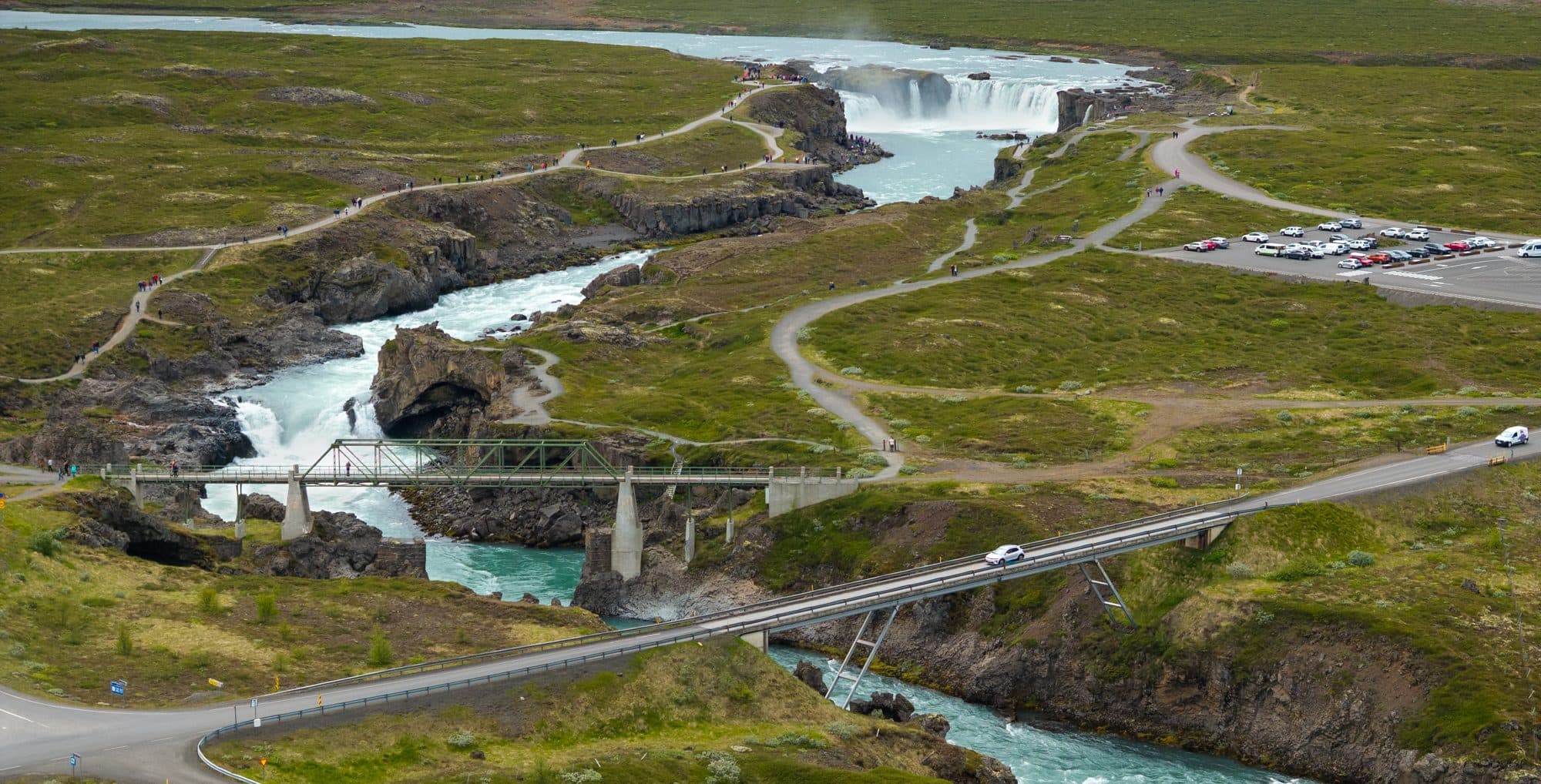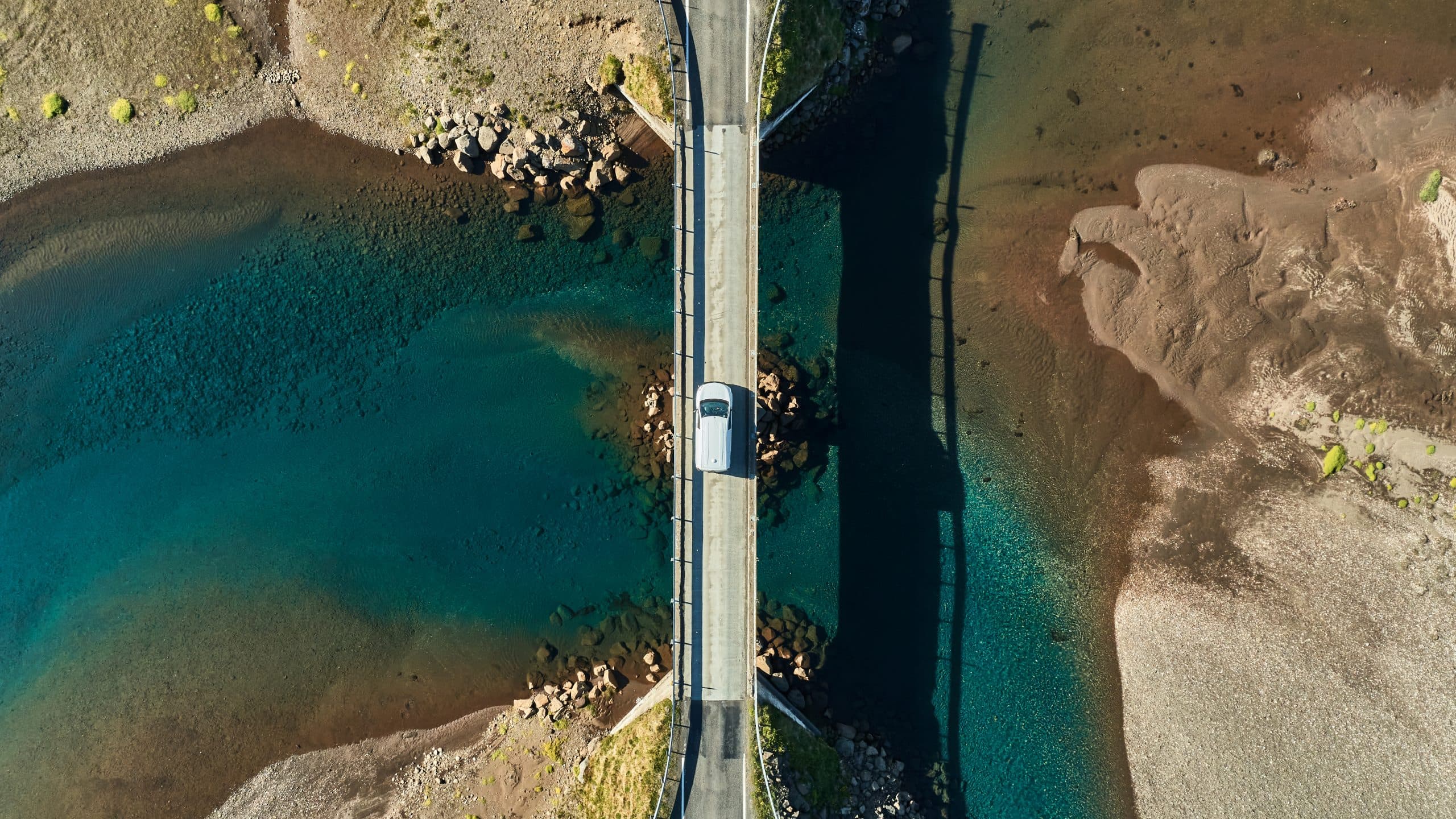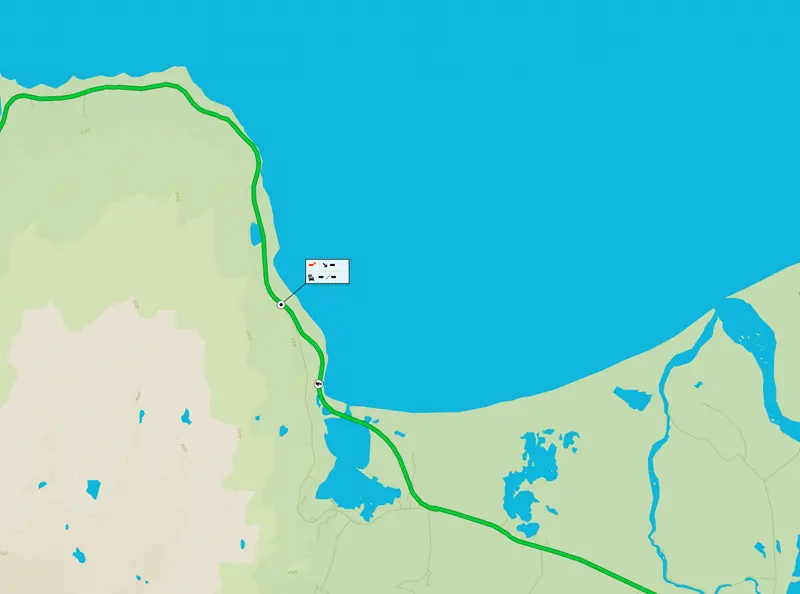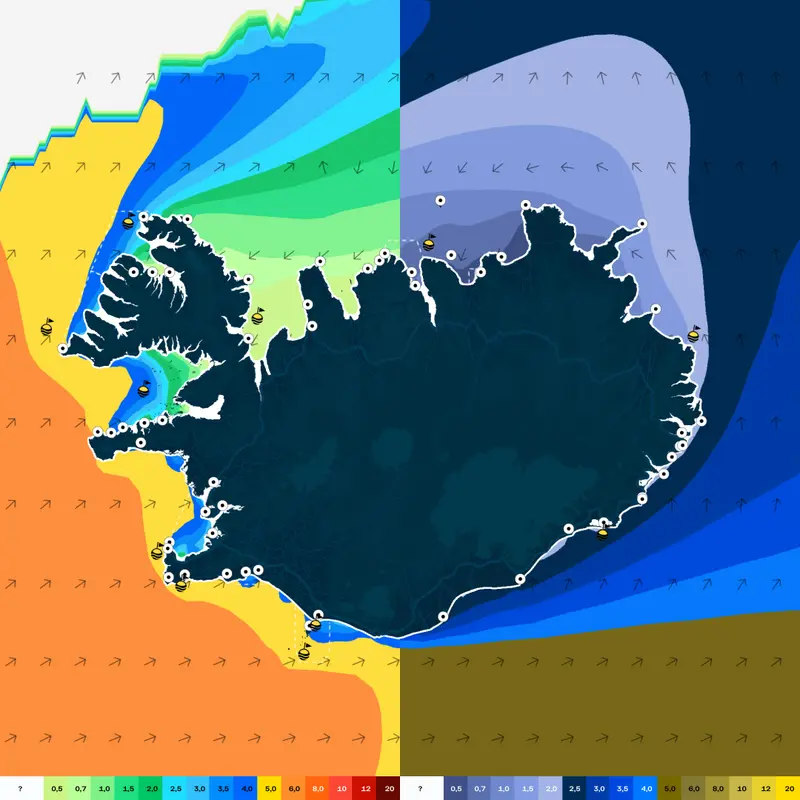The Ring Road
Opening in 1974, spanning more than 1,300 km, and connecting Reykjavík to nearly every other region in the country, the Ring Road is Iceland’s longest road, and the country’s largest, most important piece of infrastructure.
Table of contents

The IRCA is the party responsible for all of the country’s highways, and therefore the maintenance and service of the Ring Road also fall under its care. As the most important and heavily used road in the national network, the Ring Road requires constant attention to remain safe, reliable, and accessible throughout the year. Maintenance and service operations are carried out 24 hours a day, in every season and in all weather conditions, to ensure that this crucial backbone of the transportation system remains open and functional. Servicing millions of vehicles annually, the Ring Road plays a vital role in connecting communities, supporting commerce and tourism, and enabling daily travel for residents and visitors alike. The IRCA’s commitment to keeping the road in good condition reflects its role in safeguarding mobility and ensuring that people and goods can move efficiently and safely across the country at all times.
The Ring Road's history
The development of the Ring Road started with general calls for expansion of the Icelandic road system in the middle of the 20th century. Following World War II, the Icelandic road system totalled in at roughly 4,400 km. Many of the most important settlements around the country were connected at this point, but some areas still remained remote and isolated. This was due to a number of factors; for instance: a lack of bridge construction over the country’s numerous, flood-prone rivers, and the difficult, mountainous terrain which blankets a majority of the island.
Much of Icelandic road development in the post-war decades focused on modernizing and strengthening the pre-existing system, but also on building new connections to areas still isolated from Reykjavík. This massive project lasted well into the 1970s, but finally, in 1974, the Northern and Southern parts of the now-complete Ring Road were connected with the construction of multiple bridges over Skeiðarárssandur in south-east Iceland.
In 2019, the Ring Road was finally fully paved, but the IRCA continues to engage in modernization projects — such as widening, and installing dividers between directions of traffic — and upkeep on various sections around the country, particularly around areas which receive heavy traffic over the summer months.
The Ring Road today
Most sections of the Ring Road — with the exception of certain stretches in the North-East and in some areas along the Eastern fjords — see an average daily, year-round traffic volume (ÁDU) of more than 1,000 cars. This figure reflects the importance of the road as the backbone of the national transport system, used by both local residents and tourists. Between the busy summer months of May and August (SDU), traffic intensity increases significantly, with many sections carrying more than 2,000 vehicles per day. During this peak season, the concentration of vehicles can create heavy traffic conditions, particularly at bottlenecks close to popular destinations, where passing opportunities are limited. For this reason, travellers are advised to remain vigilant, patient, and attentive at all times when navigating the Ring Road.
The Ring Road also features hundreds of bridges of varying sizes and designs, each an important link in maintaining uninterrupted travel across rivers and fjords. While major progress has been made over the last few decades, 29 single-lane bridges still remain as of 2023 — a notable improvement from 1990, when the number stood at 140. Single-lane bridges, while functional, often require careful driving and courteous communication between drivers, especially in busy conditions. Recognizing this, the government’s proposed Transport Plan for 2024–2038 sets a clear goal: to widen and modernize all remaining single-lane bridges on the Ring Road before 2039, thereby improving safety, efficiency, and the overall flow of traffic on this critical route.

Routing
The Ring Road’s path takes it along Iceland’s jagged coastline, over rivers and volcanic sands, and across secluded heaths and highlands, with brief stops in developed areas and settlements along the way.
The road directly services — or provides quick access to — almost every corner and major settlement of the country, with the exception of the Westfjords and Snæfellsnes, and parts of North-East Iceland.
The road passes directly through many popular tourist destinations, such as Seljalandsfoss, Jökulsárlón and Mývatn. Many other natural attractions are also serviced by the Ring Road’s connective roads.
Safety concerns
Although the Ring Road has been heavily modernized throughout its over 50 years of existence, travellers utilizing rental cars, and/or are unused to driving in Iceland, can nevertheless suffer accidents due to distraction, weather conditions, or other unforeseen events.
Should an accident occur in a remote place, such as on a heath, or in other places far away from urban settlement, rescue efforts could be far away. Travellers are encouraged to ensure that they have emergency supplies when travelling. The IRCA also strongly recommends that first-time travellers familiarise themselves with all necessary information regarding their planned route, and take all precautions necessary when on the road.
For more information on driving in Iceland you can visit safetravel.is for guidelines on Icelandic traffic law, road signs, and general tips on driving in Iceland, both in winter and summer.








